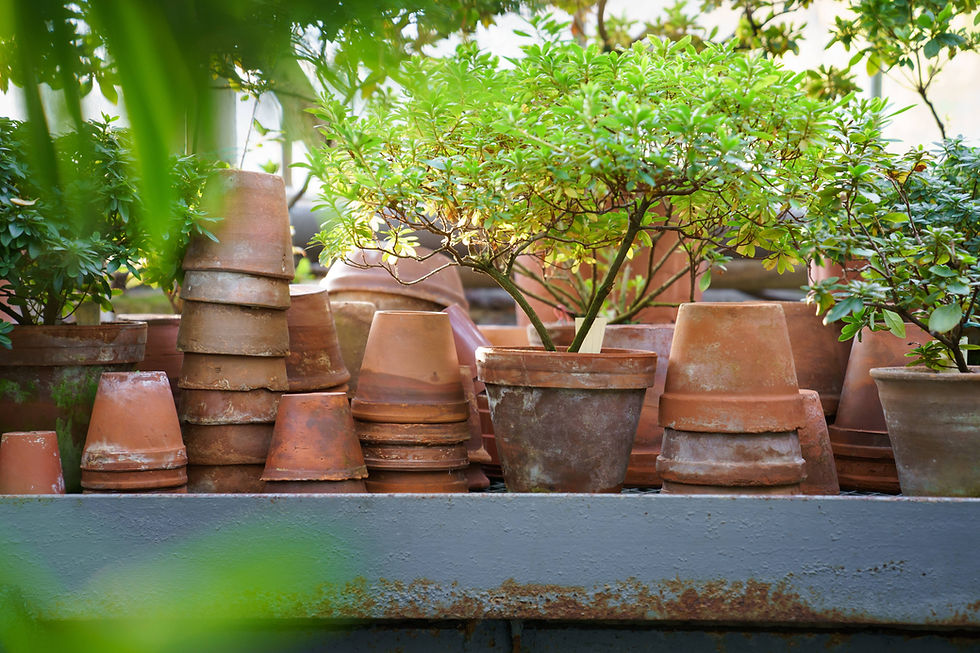A Glimpse into Minnan's Architectural WorldⅡ: Terracotta Floor Tiles
- Frida Luo
- Nov 17, 2023
- 3 min read
Updated: Nov 21, 2023

Located in the southern part of Fujian province, China, Minnan is a fascinating region that includes cities like Quanzhou, Xiamen, and Zhangzhou. Back in the Yuan Dynasty, Quanzhou was the starting point of the famous "Maritime Silk Road." This unique position brought together different cultures, resulting in the rich and distinctive Minnan culture and its traditional red-brick houses, which are often referred to as the "Red Brick Cultural Zone." These houses, with their vibrant red bricks, represent the unique architectural style of Minnan.
This is the second chapter on Minnan Architecture - Terracotta Floor Tiles.
All the building materials mentioned in this blog are available for purchase. For more product information, please contact us at info@shchanson.com."
Now, let's move on to our reclaimed terracotta floor Tiles.

The terracotta tiles are one of the most common building material in the Minnan region, which holds a special place in the cultural and societal landscape of the local people. The aesthetic preferences of the Minnan community infuse this material with both cultural significance and emotional resonance.
Because of its advantageous location, the Minnan region has benefited greatly from frequent maritime trade that has connected it to cultures in Southeast Asia and Europe. Within this diverse cultural milieu, red brick architecture has gradually evolved into a distinctive and unique architectural style that characterizes the Minnan area.
Reviving Century-Old Eastern Artisanal Mastery with Terracotta Tiles
Terracotta Tiles
The terracotta tiles we've acquired have a history of nearly 100 years old.
A century ago, the production of traditional terracotta tiles was an exceedingly intricate process, involving meticulous steps such as clay selection, molding, air drying, kiln loading, firing, and unloading. Each of these steps was highly meticulous, demanding the craftsmen to have both patience and craftsmanship.

The first step involves selecting and refining the clay.
This process involved carefully selecting suitable raw soil and filtering out the small stones and other impurities. After adding water to the soil, craftsmen repeatedly treaded on it, eventually turning it into a smooth and cohesive clay mixture. This process usually takes about a day and a night to complete.
Following that comes the molding and air-drying phase. Tiles-molding emphasized cool, ventilated, and naturally slow drying, typically taking about a month. However, the period was not fixed, Thicker or larger tiles demanded a longer time for air-drying.
The third step is kiln loading. It was the most technically demanding step. The kiln loading process took into account both the structure of the kiln and the traits of the material. Terracotta tiles were often stacked in columns.

Once kiln loading was completed, the crucial firing process began. It was a battle with fire and a key moment to test the skills of the craftsmen. The firing process lasted over 30 days, requiring round-the-clock observation by the craftsmen.
The first stage started with a small fire for 9-10 days to slowly remove the remaining water from the clay. The primary fuel used was discarded wood, such as large tree trunks.
Next, a medium fire was applied for another 9-10 days, using fuels like construction boards.
Finally, it was fired at high temperature for another 15 days, utilizing oily fuels like wood shavings, coarse bran, or peanut shells, resulting in a more vibrant hue. During this phase, the kiln windows were sealed shut, leaving only a peephole at the center for observation.

The last step was to turn off the fire. The timing and technique was directly related to the success or failure of the tile-making.
After all these steps were accurately completed, finally, the craftsmen welcomed the moment of harvest. A batch of terracotta tiles was fired and completed a century ago!
Therefore, the terracotta tiles we collected have excellent quality, embodying the sweat and toil of generations of tile-making craftsmen. Through the reutilization, these captivating terracotta tiles rekindle their unique allure, echoing the timeless imprints from the distant East. The act of reuse not only champions environmental friendliness but also revitalizes the inherent charm of these tiles, infusing them with renewed significance as they grace our spaces!
The standard dimensions for square reclaimed terracotta tiles are 36x36x4cm and 29x29x1.5cm.
The standard dimension for hexagonal reclaimed terracotta tiles is 20x20x1.2cm.
Due to these old terracotta tiles were purely hand-made, They may vary slightly in both size and color. However, these subtle distinctions accentuate their rustic charm and make them a distinctive choice for those seeking a touch of historical craftsmanship in their spaces.
Feel free to email us at info@shchanson.com for further inquiries or information regarding reclaimed Terracotta Tiles!

I hope you enjoyed this blog! Thank you for your time.







Comments